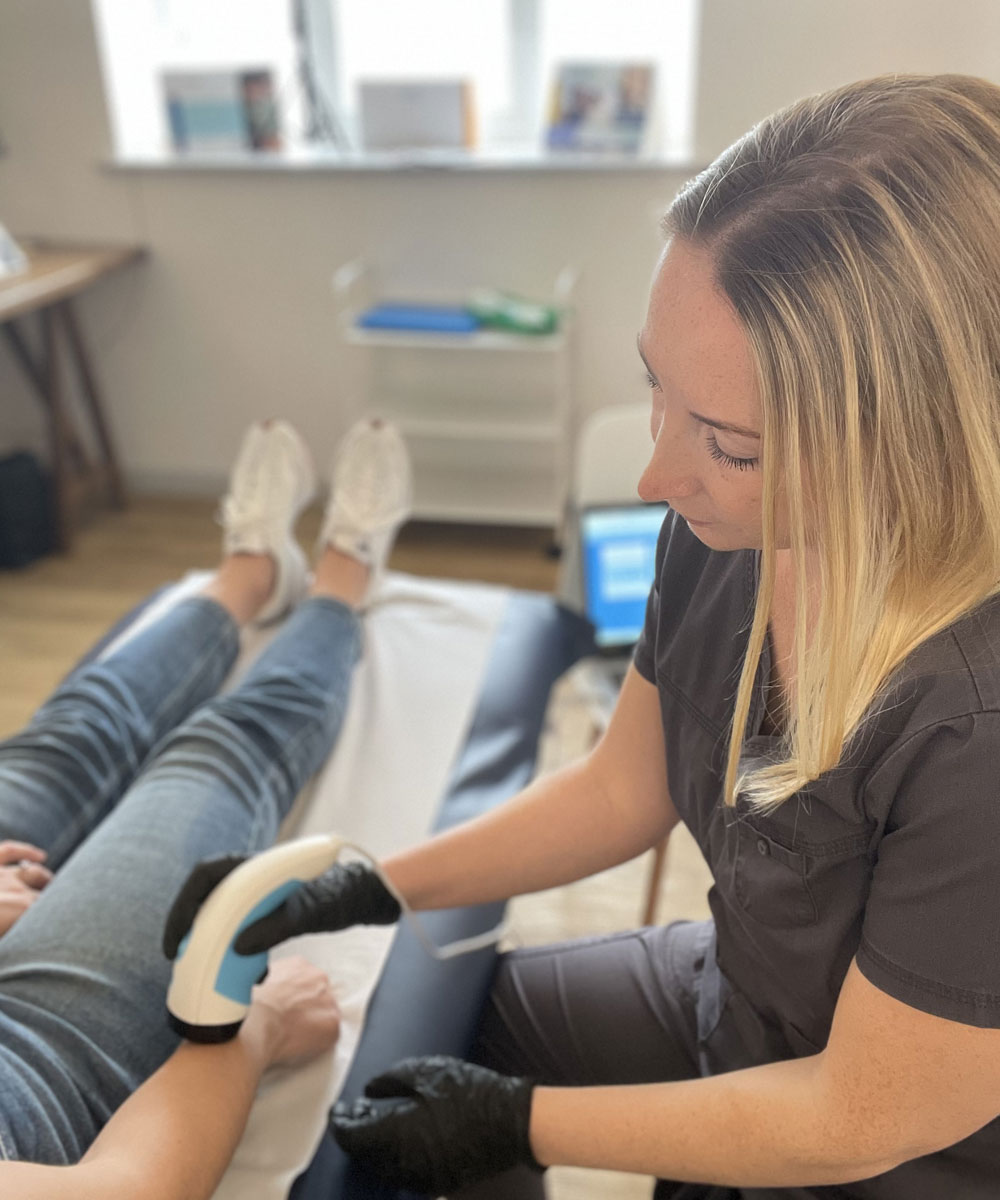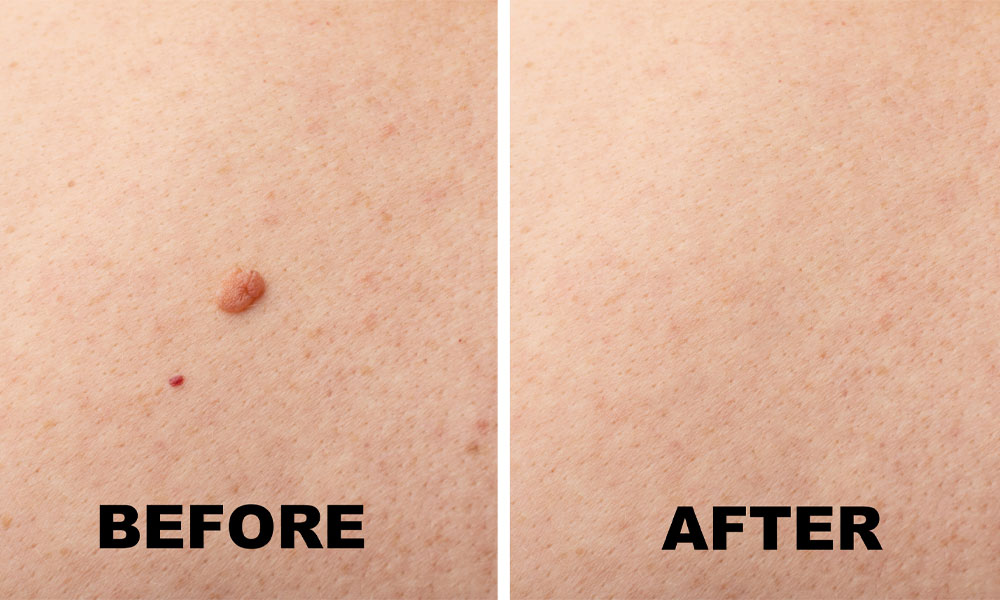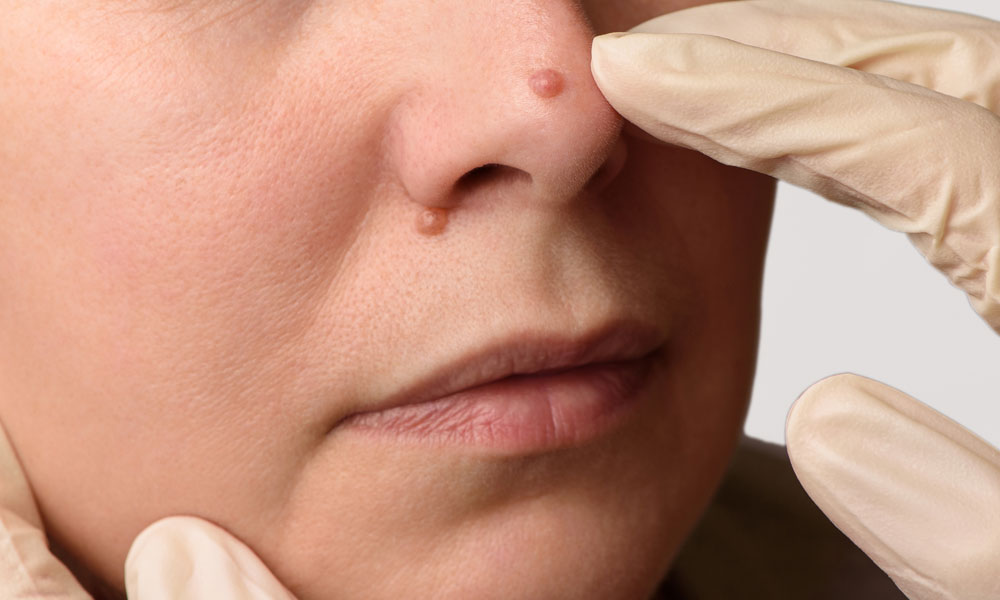
Moles and Warts
Specialist benign skin lesion removal & mole reduction treatment
A mole, or naevus, is a common skin growth that develops when pigment-producing cells (melanocytes) grow in groups. Moles typically appear in childhood and present as small, dark marks, or sometimes flesh-coloured small bumps, on your skin. They are usually raised.
Moles
Moles, also known as naevi, are common skin growths that can appear anywhere on the body. They are typically small, pigmented spots that can vary in color, size, and shape. Here are some key points about moles:
- Appearance: Moles can range in color from tan, brown, black, to pink or flesh-colored. They are usually round or oval-shaped, and their size can vary from tiny dots to larger, raised bumps. Moles can be flat or slightly raised, and they may have a smooth or rough texture.
- Cause: Moles are caused by the clustering of melanocytes, which are the pigment-producing cells in the skin. These cells can form a cluster or nest, resulting in the development of a mole. The exact cause of why some people develop more moles than others is not fully understood, but a combination of genetic and environmental factors can play a role.
- Types: There are different types of moles, including:Congenital moles: These moles are present at birth or appear shortly after. They are generally larger in size and may have a higher risk of developing into melanoma (a type of skin cancer) compared to other types of moles.– Acquired moles: These moles develop during childhood or adulthood. They can appear anywhere on the body and are usually harmless.– Atypical moles: Also known as dysplastic naevi, these moles have irregular borders, uneven colouration, and a larger size compared to common moles. Atypical moles may have a higher risk of developing into melanoma, and individuals with multiple atypical moles may be at an increased risk of melanoma.
- Changes and Monitoring: It is important to monitor moles for any changes, as certain changes can be a sign of skin cancer. The ABCDE rule can help identify potential warning signs:Asymmetry: One half of the mole does not match the other half.Border irregularity: The edges of the mole are uneven or poorly defined.
Color variation: The mole has different colors or shades within it.
Diameter: The mole is larger than 6 millimeters in diameter (about the size of a pencil eraser).Evolving: The mole is changing in size, shape, color, or elevation. - Diagnosis and Treatment: If you notice any changes in a mole or have concerns about a particular mole, you can visit The Skin Specialist Nurse located in Buckinghamshire to have your mole screened. In the event of a suspicious mole being identified, referral to a dermatologist will take place where if necessary a biopsy may be carried out to check for any abnormal or cancerous cells.
Remember, while most moles are harmless, it is important to be vigilant about changes in moles and to protect your skin from excessive sun exposure. Regular self-examinations and annual skin checks with a healthcare professional can help ensure early detection and appropriate management of any concerning moles.
Once your moles has been checked and confirmed benign, if you would like to have treatment to reduce the appearance of a mole then we can carry out a Mole reduction procedure. Prices start from £145 per mole.
When should I be concerned about a mole?
If you notice a new mole, your mole has changed in colour, size or texture or you have any concerns you should always get your mole checked.
Do you offer mole removal treatment?
The Skin Specialist Nurse specialises in benign skin lesion removal and mole reduction treatment. If you have a healthy mole that you would like removing for cosmetic purposes you will need to provide either a GP note to confirm benign or we can carry out our mole screening service prior to removal.
Click here to find out more about our mole screening service
Warts
Warts are benign skin growths caused by the human papillomavirus (HPV). They can appear on any part of the body and vary in size and appearance. Common types of warts include common warts, plantar warts (on the soles of the feet), and genital warts. Treatment options for warts include over-the-counter medications, cryotherapy (freezing), electrocautery, or surgical removal.




